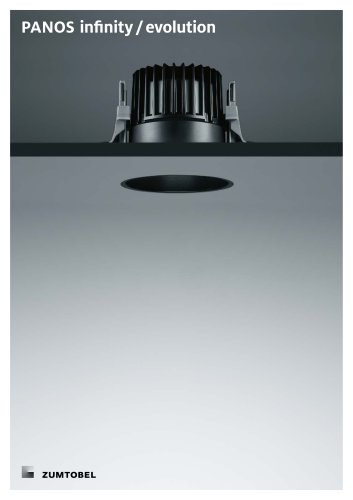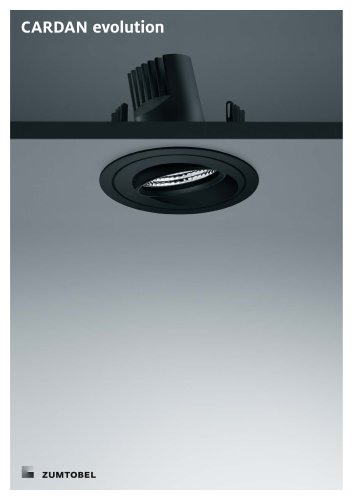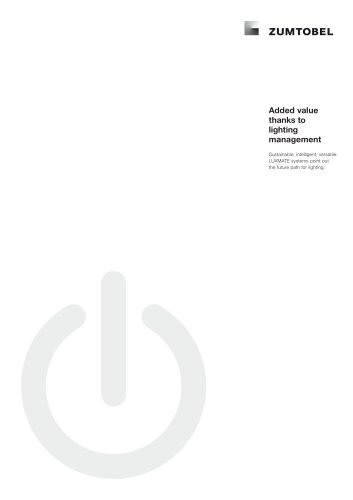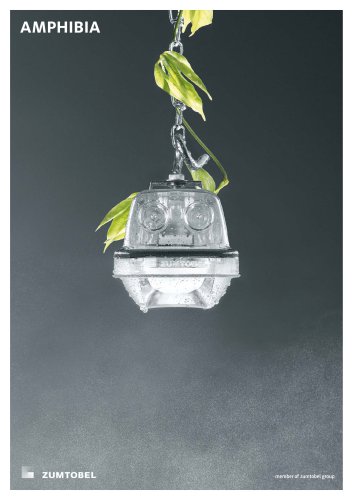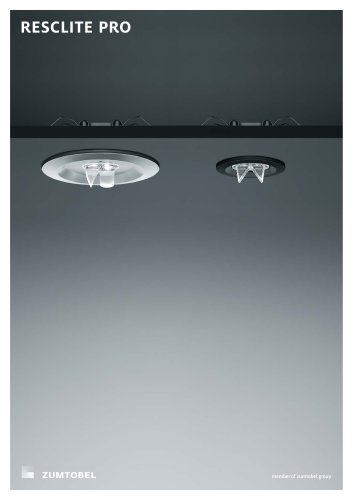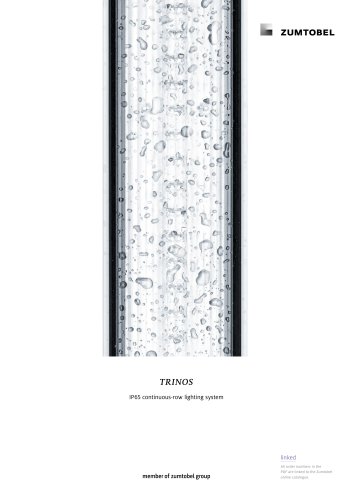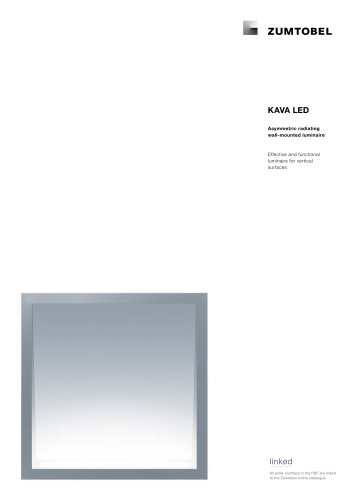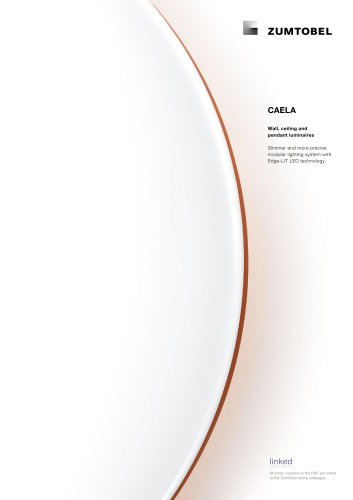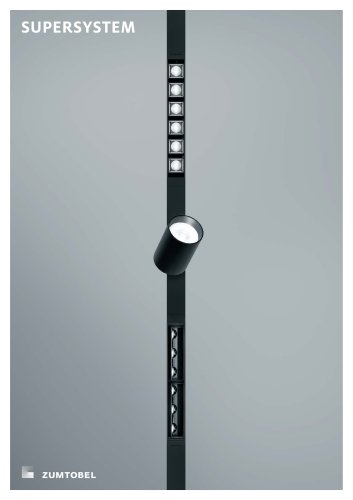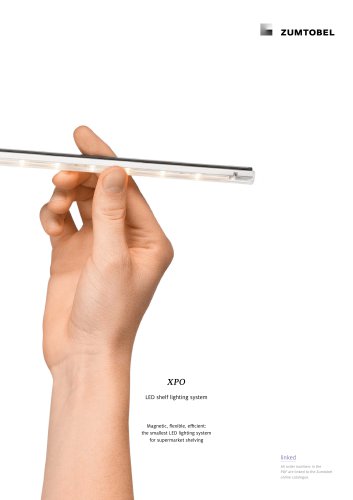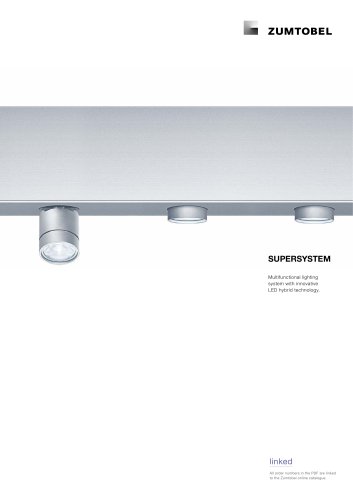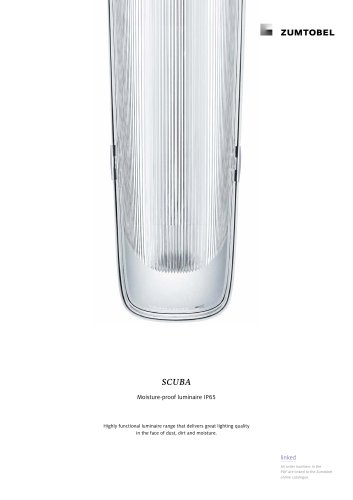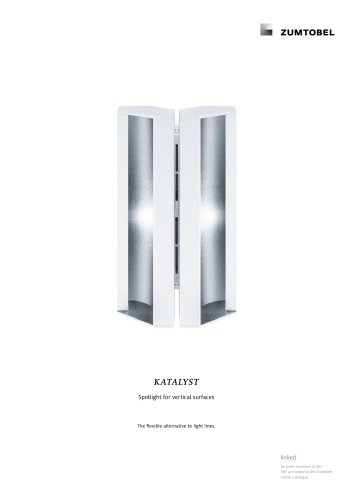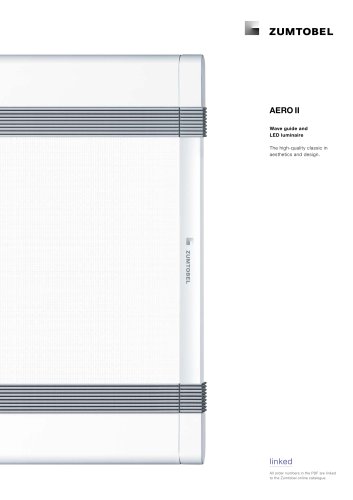Catalog excerpts
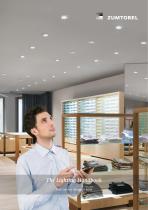
The Lighting Handbook Your concise reference book
Open the catalog to page 1
Lighting technology Standard values for indoor and outdoor lighting Based on the new European standards Lighting application Lighting control and control gear Emergency lighting Design tools
Open the catalog to page 3
For questions and suggestions on "The Lighting Handbook" Zumtobel Lighting GmbH Schweizer Strasse 30 Postfach 72 6851 Dornbirn, AUSTRIA T +43/(0)5572/390-0 info@zumtobel.info 6th edition: April 2018
Open the catalog to page 4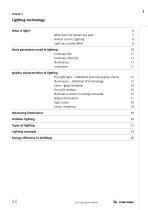
What does the human eye see? 7 Human Centric Lighting 8 Light has a triple effect 8 Basic parameters used in lighting 10 Quality characteristics of lighting The right light - traditional and new quality criteria 12 Illuminance - definition of terminology 12 Glare - glare limitation 14 Illuminance levels on ceilings and walls 17 Energy efficiency in buildings 26 « The Lighting Handbook M ZUMTOBEL
Open the catalog to page 5
What is light? Light is that part of the electromagnetic spectrum that is perceived by our eyes.The wavelength range is between 380 and 780 nm. The cones come on during the day and we see colours, whereas at night the rods take over and we only see shades of grey. What is the melanopic effect of light? The retina also contains photosensitive ganglion cells. These are sensitive to blue light and suppress the sleep hormone melatonin at night. Melatonin is responsible for a good sleep at night. Suppressing melatonin in the morning helps keep you awake during the day. This means that the right...
Open the catalog to page 6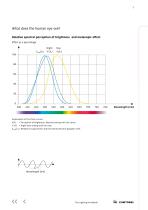
What does the human eye see? Relative spectral perception of brightness and melanopic effect Effect as a percentage Night Smel( ) V'( λ) λ Explanation of the three curves: V(λ) = Perception of brightness, daytime seeing with the cones V'(λ) = Night-time seeing with the rods Smel(λ) = Melatonin suppression with the photosensitive ganglion cells
Open the catalog to page 7
Human Centric Lighting Human Centric Lighting (HCL) expresses the positive effect of light and lighting on the health, well-being and performance of humans and thus has both short and long-term benefits. Light has a triple effect Light for visual functions – llumination of task area in conformity I with relevant standards – Glare-free and convenient Light for emotional perception – ighting enhancing architecture L – Creating scenes and effects Light creating biological effects – upporting people’s circadian rhythm S – Stimulating or relaxing
Open the catalog to page 8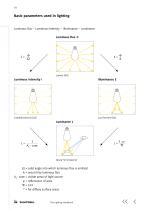
Basic parameters used in lighting Luminous flux – Luminous intensity – Illuminance – Luminance Luminous flux Φ Candela [lm/sr]=[cd] Ω = solid angle into which luminous flux is emitted A = area hit by luminous flux AL · cos = visible areas of light source ρ = reflectance of area = 3.14 * = for diffuse surface areas
Open the catalog to page 10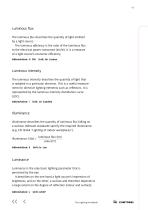
Luminous flux The luminous flux describes the quantity of light emitted by a light source. The luminous efficiency is the ratio of the luminous flux to the electrical power consumed (lm/W). It is a measure of a light source’s economic efficiency. Abbreviation: Φ Phi Unit: lm Lumen Luminous intensity The luminous intensity describes the quantity of light that is radiated in a parti ular direction. This is a useful measurec ment for directive lighting elements such as reflectors. It is represented by the luminous inten ity distribu ion curve s t (LDC). Abbreviation: Ι Unit: cd Candela...
Open the catalog to page 11
Traditional quality criteria - Sufficient illumination level - Harmonious brightness distribution - Glare limitation - Avoidance of reflections - Good modelling - Correct light colour - Appropriate colour rendering Illuminance - definition of terminology Illuminance maintenance value Em Value below which the illuminance level must not fall in the visual task area. Visual task area Illuminance levels are specified for specific visual tasks and are designed for the area in which these may take place. If the exact location is unknown, the room as a whole or a defined area of the workstation is...
Open the catalog to page 12
Relative illuminance (%) – Initial value – Maintained illuminance with 3-year cleaning – ystem value withS out maintenance Maintenance value = maintenance factor x initial value Reflectance factors The reflectance factors of the room and object surfaces determine not only the perception of the room but also the reflected light and thus the room’s brightness. The reflectance factor table in the system helps you determine the reflectance factors.
Open the catalog to page 13
14 Quality characteristics of lighting Glare – glare limitation Direct glare Reflected glare Cause – Luminaires without glare control – Very bright surfaces Cause – Reflective surfaces – Incorrect luminaire arrangement – Incorrect workstation position Effect – Loss of concentration – More frequent mistakes – Fatigue Effect – Loss of concentration – More frequent mistakes – Fatigue Remedy – Luminaires with limited luminance levels – Blinds on windows The evaluation of glare The glare of all luminaires that are in the room regularly can be evaluated with the UGR method, as specified in the...
Open the catalog to page 14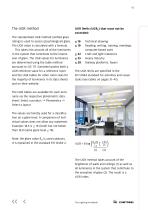
The UGR method The standardised UGR method (unified glare rating) is used to assess (psychological) glare. The UGR value is calculated with a formula. This takes into account all of the luminaires in the system that contribute to the impression of glare. The UGR values for luminaires are determined using the table method pursuant to CIE 117. Zumtobel quotes both a UGR reference value for a reference room and the UGR tables for other room sizes for the majority of luminaires in its data sheets and on their website. The UGR tables are available for each luminaire via the respective...
Open the catalog to page 15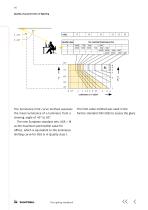
16 Quality characteristics of lighting UGRL Quality class A 1 2 3 The luminance limit curve method assesses the mean luminance of a luminaire from a viewing angle of 45° to 85°. The new European standard sets UGR = 19 as the maximum permissible value for offices, which is equivalent to the luminance limiting curve for 500 lx in Quality class 1. The limit value method was used in the former standard DIN 5035 to assess the
Open the catalog to page 16All ZUMTOBEL catalogs and technical brochures
-
SUPERSYSTEM II
52 Pages
-
ZUMTOBEL SERVICES
44 Pages
-
ARCOS
28 Pages
-
LIGHT FOR CLEANROOMS
6 Pages
-
LIGHT FOR DATA CENTRES
6 Pages
-
CLEAN II industry
12 Pages
-
CLEAN II supreme
16 Pages
-
EMERGENCY PORTFOLIO
88 Pages
-
TUBILUX
6 Pages
-
LINELIGHT
6 Pages
-
LIGHT FIELDS III
28 Pages
-
LINETIK
18 Pages
-
LITECOM
62 Pages
-
MICROS
16 Pages
-
MIREL evolution
32 Pages
-
ONDARIA
16 Pages
-
PANOS
42 Pages
-
PERLUCE
28 Pages
-
VAERO
20 Pages
-
TECTON
64 Pages
-
CARDAN evolution
16 Pages
-
ECOOS II
24 Pages
-
DIAMO
20 Pages
-
ONLITE
276 Pages
-
Light for Hotels and Wellness
52 Pages
-
AMPHIBIA
26 Pages
-
RESCLITE PRO
26 Pages
-
CLARIS evolution
16 Pages
-
The Light.
40 Pages
-
Light for Health and Care
80 Pages
-
Light for Art and Culture
70 Pages
-
TRINOS
38 Pages
-
SUPERSYSTEM outdoor
22 Pages
-
SLOTLIGHT infinity
46 Pages
-
SCONFINE
24 Pages
-
PASO II
70 Pages
-
MELLOW LIGHT
32 Pages
-
MICROTOOLS
24 Pages
-
LINCOR
24 Pages
-
LINARIA
18 Pages
-
LEDOS
24 Pages
-
KAVA
12 Pages
-
IYON
40 Pages
-
INTRO
52 Pages
-
DISCUS
32 Pages
-
CRAFT
48 Pages
-
CAELA
38 Pages
-
LIGHT FIELDS
40 Pages
-
FACTOR
18 Pages
Archived catalogs
-
SUPERSYSTEM_2020
80 Pages
-
Light for care
24 Pages
-
CAPA
32 Pages
-
Light for Hotel and Wellness
52 Pages
-
XPO
16 Pages
-
SUPERSYSTEM
72 Pages
-
SEQUENCE
36 Pages
-
SCUBA
36 Pages
-
NIGHTSIGHT
30 Pages
-
KATALYST
11 Pages
-
HELISSA
20 Pages
-
Light and façades
150 Pages
-
ECOOS
18 Pages
-
CREDOS
11 Pages
-
CHIARO
24 Pages
-
AXON
9 Pages
-
AERO II
22 Pages
-
2LIGHT Mini
12 Pages




















